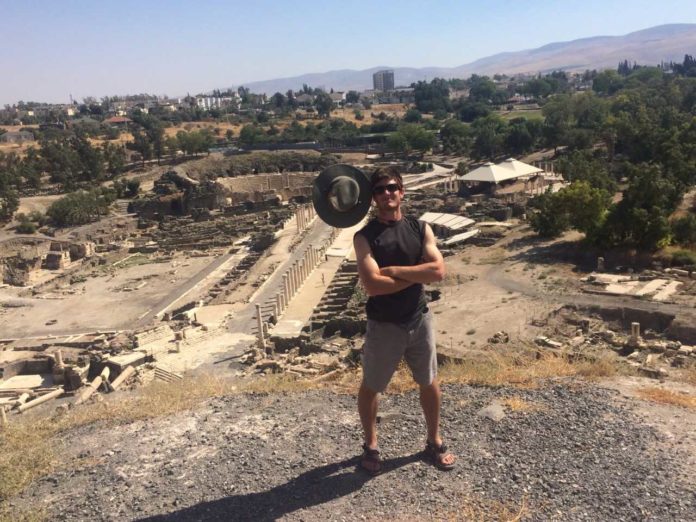By Brooke Hill
This summer, recent Baylor graduate Nathaniel Eberlein was in for a surprise when he arrived in Israel to participate in the Huqoq Excavation Project.
Eberlein was promoted to the title of square supervisor after a current square supervisor had to step away from the project. This summer was Eberlein’s second, which allowed him to share his knowledge with other students he was put in charge of.
“You sometimes get students who worked with us previously and are getting experience and are able to fill in,” Director of the Huqoq Excavation Project Jodi Magness said. “We do take advantage of students who return… because they have the experience and we try to get them to work their way up. It’s a great opportunity for students to get archeological experience…and to sort of work their way up within the project.”
Eberlein’s role included instructing other students and helping them to understand their findings while still doing his own work.
Eberlein reported to area supervisors who would guide him in how to instruct his peers.
“I would go observe them and see what they were finding,” Eberlein said. “If they found any special items, I would be the one to report those and to assign numbers to those items.”
Eberlein explained that part of the reasons this project is so special is that many people come together to share their knowledge. Baylor professor Dr. Nathan Elkins is the coin expert for the dig, and he’s the one who encourages his art history students to look into the program.
“I learned more about teamwork, so it’s a really cool project in that there’s many different specialities represented,” Eberlein said. “There’s a pottery expert, there’s an architectural expert, there’s a coins expert and everybody comes together to collaborate on this one project, so academically it’s cool to see that variety and how each person brings something important to the table.”
Students from The University of North Carolina at Chapel Hill, Brigham Young University and The University of Toronto work alongside Baylor students on the project. Not only do students get the opportunity to learn more about archaeology and the ancient world, but they get to meet other students with similar interests from North America.
“We would love to have more Baylor students join us,” Magness said. “I think it’s a great experience, they get academic credit for it, it’s real experiential education, the program includes field trips around the country, and obviously we’re doing something right because students keep coming back every summer.”
Over the last seven years, the team has uncovered multiple dazzling mosaics in the late Roman synagogue discovered in Huqoq, built in two segments — one in the 5th century, another in the 12th or 13th century, according to a Baylor Proud article. Three of the mosaics they found this summer depict the Greco-Roman sun god Helios, Jonah and the whale and the tower of Babel, according to a press release from the University of North Carolina at Chapel Hill.
“Since this Excavation has received as much attention as it has nationally and internationally and press coverage I thought it would be a great thing for the university to be associated with,” Baylor Associate Professor of Art History Dr. Nathan Elkins said.
Dr. Elkins works on the project as the coin specialist and was the one who got Baylor involved in the project through his connection with Dr. Magness.
“It goes along with Baylor’s interest in religion, since this is an ancient monumental synagogue. I thought that would be something that might be of special interest to Baylor students,” Elkins said.






